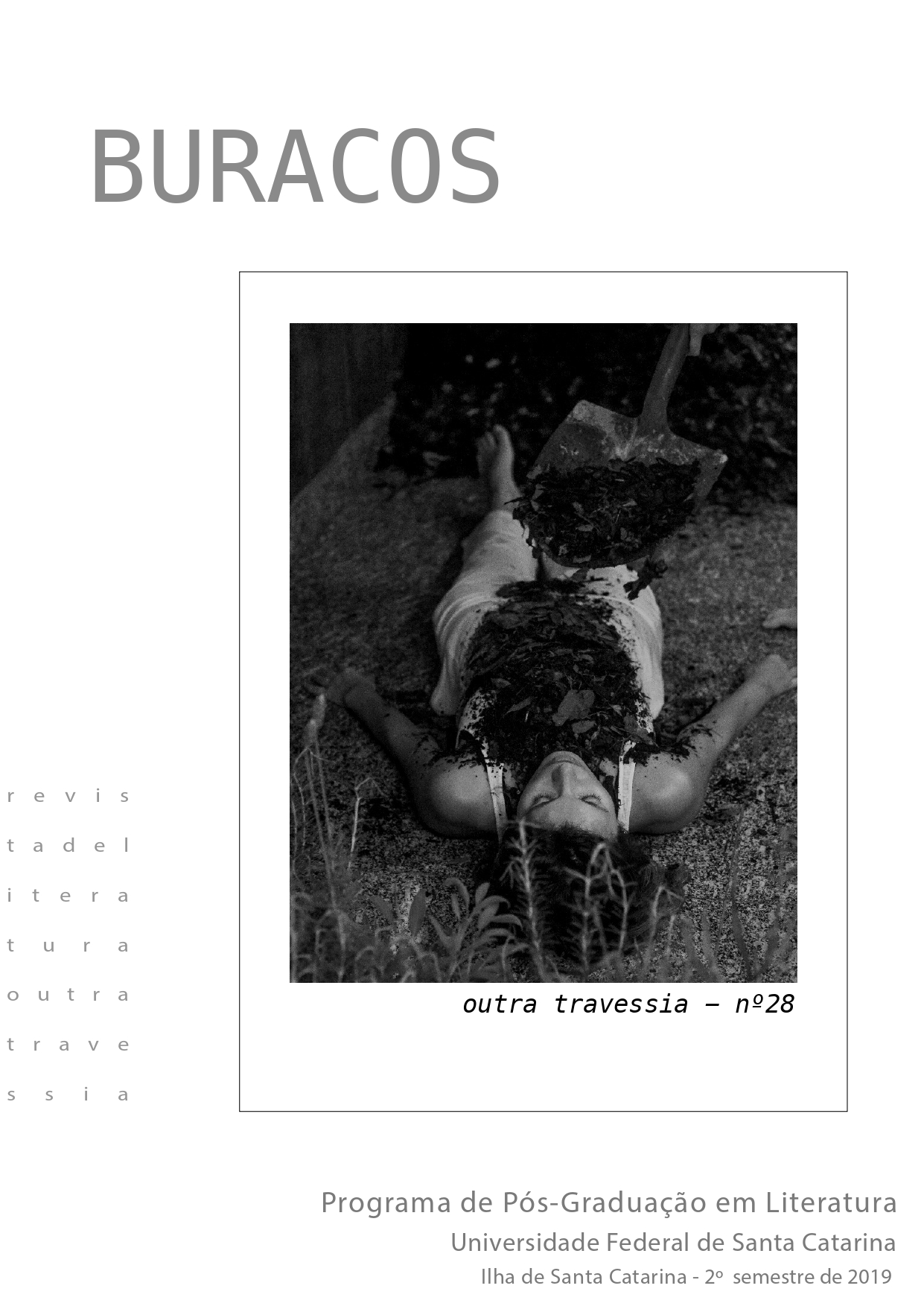The manifestations of empathy between humans and non-humans in Androes Dream of Electric Sheep? (1968) by Philip K. Dick
DOI:
https://doi.org/10.5007/2176-8552.2019.e73327Abstract
Transhumanist and post-humanist studies present the improvement of the human body as a way of guaranteeing more autonomy to individuals, however, the more involvement and improvement of the bodies, the more robotic the humans can become. Some dystopian works, which bring the discussion about human bodies and artificial bodies, point to a phenomenon of distance between humans and exclusion of the weakest and/or different from a physical appearance and standard behavior. In contrast, there are humanoid robots with artificial life enhancement that seeks to show human behavior in robotic bodies. In this work, it will be analyzed how empathy can be manifested in non-human bodies from the concept of artificial life in the work Do Androids Dream of Electric Sheep? (1968), by Philip K. Dick, trying to understand how the concept of empathy presented in the narrative is flawed and manifests itself as a way to restrict and eliminate the existence of non-human bodies. To this end, researchers such as Hayles (1999), Bedau (2007) and Brand (2013) will be used to discuss conceptual aspects of transhumanism, post-humanism and artificial life.
References
ASIMOV, Isaac. O Homem Bicentenário. 1. ed. Porto Alegre: L&PM Pocket, 1997, 120p. Tradução: Milton Persson.
ASIMOV, Isaac. Eu, Robô. São Paulo: Editora Aleph, 1° Edição, 2014, 315p. Tradução: Aline Storto Pereira.
BEDAU, Mark A. Artificial Life. In: MATTHEN, Mohan; STEPHENS, Christopher (Ed.). Handbook of The Philosophy of Biology. North-Holland: Elsevier, 2007, p. 586 - 603.
BRAND, Maria. Empathy and Dyspathy between Man, Android and Robot in Do Androids Dream of Electric Sheep? by Philip K. Dick and I, Robot by Isaac Asimov. England: Lund University, 2013, 26p.
DICK, Philip K. Androides sonham com ovelhas elétricas?. 1. ed. São Paulo: Aleph, 2015, 191p. Tradução: Ronaldo Bressane.
HILÁRIO, Leomir Cardoso. Teoria Crítica e Literatura: a distopia como ferramenta de análise radical da modernidade. Anuário de Literatura, Florianópolis, v.18, n.2, p. 201-215, 2013.
HAYLES, N. Katherine. How we became posthuman: virtual bodies in cybernetics, literature, and informatics. Chicago: University of Chicago, 1999, p.222 – 246.
KRÜGER, Luana de Carvalho. O limiar entre o corpo humano e o corpo robótico: transumanismo e pós-humanismo nas obras Deuses de Pedra, de Jeanette Winterson e Androides Sonham com Ovelhas Elétricas?, de Philip K. Dick. 2019, 149f. Dissertação (Mestrado em Letras), Programa de Pós-Graduação em Letras, Centro de Letras e Comunicação, Universidade Federal de Pelotas, 2019.
MARKS DE MARQUES, Eduardo; PEREIRA, Anderson Martins. A justaposição do pós-humano e do transumano no gênero distopia: Uma análise das trilogias Divergente e A 5ª Onda. Ilha do Desterro, Florianópolis, v. 70, p. 119-127, 2017.
MENDES, Cláudio Lúcio. O corpo em Foucault: superfície de disciplinamento e governo. Revista de Ciências Humanas, Florianópolis, EDUFSC, n. 39, p. 167-181, 2006.
MORE, Max. The Philosophy of Transhumanism. In: MORE, Max; VITA-MORE, Natasha (Ed.). The transhumanist reader: classical and contemporary essays on the science, technology, and philosophy of the human future. United Kingdom: Wiley-Blackwell, 2013, p. 03 – 17.
MORE, Max; VITA-MORE, Natasha (Ed.). The transhumanist reader: classical and contemporary essays on the science, technology, and philosophy of the human future. United Kingdom: Wiley-Blackwell, 2013, 460p.
MIRANDA, Allana Dilene de Araujo; MOUSINHO, Luiz Antonio. Blade runners sonham com o espaço? – uma análise intermidiática do espaço. Terra roxa e outras terras – Revista de Estudos Literários, Londrina: Universidade Estadual de Londrina, v.29, p.40-51, 2015.
NETTO, Marcio Lobo; RINALDI, Luciene Cristina Alves. Vida Artificial: conceitos e implicações. In: SIMPÓSIO BRASILEIRO DE AUTOMAÇÃO INTELIGENTE, 5., Minas Gerais. Anais... Minas Gerais: CEFET, 2011, p.921 – 942.
OLIVEIRA, Fatima Regis. Ficção Científica: uma narrativa da subjetividade homem-máquina. Revista Fluminense, Rio de Janeiro: Universidade Federal Fluminense, vol. 9, p. 177 – 198, 2003.
OLIVEIRA, Fátima Regis. Os autômatos da ficção científica: reconfigurações da tecnociência e do imaginário tecnológico. Revista Intexto, Porto Alegre: UFRGS, v. 1, p. 1 - 15, 2006.
ROSENWEIN, Barbara H. Problems and Methods in the History of Emotions. Passions In Context. International Journal for the History and Theory of Emotions, 2010, p.1-32. Disponível em: http://www.passionsincontext.de/index.php?id=557. Acesso em: 06 jun. 2018.
RÜDIGER, Francisco. Cibercultura e Pós-humanismo: Exercícios de arqueologia e criticismo. 1. ed. Porto Alegre: EDIPUC, 2008, 238p.
Downloads
Published
Issue
Section
License
Os artigos e demais trabalhos publicados na outra travessia passam a ser propriedade da revista. Uma nova publicação do mesmo texto, de iniciativa de seu autor ou de terceiros, fica sujeita à expressa menção da precedência de sua publicação neste periódico, citando-se a edição e data dessa publicação.
Esta obra foi licenciada com uma Licença Creative Commons Atribuição-NãoComercial 4.0 Internacional.



